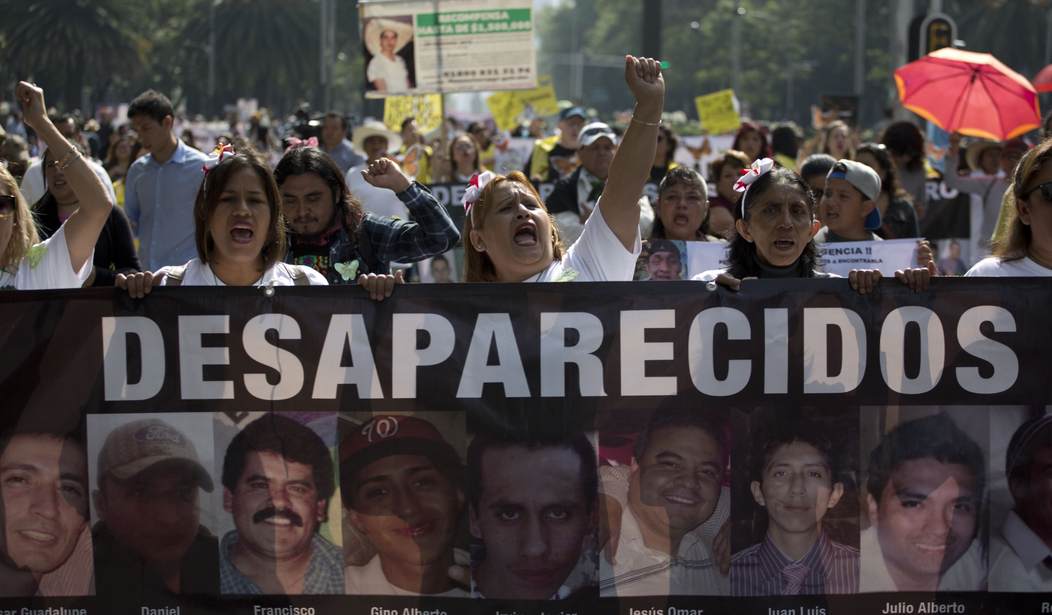Yesterday I wrote about the missing and the disappeared in Mexico which number in the tens of thousands. Recently, that number included a group of surfers made up of two Australian brothers and their American friend. They were carjacked and murdered, their bodies dumped in a deep well. When authorities found them they found a 4th body in the well, apparently unrelated to their murders. Welcome to Mexico.
Today the NY Times published a first person account written by Manuel Gisbert, a kidnap victim who survived after his family agreed to pay a ransom to the cartel members who were holding him.
My partner at the time and I were on a highway on the outskirts of Mexico City shooting an experimental film when a group of armed men approached us. Our mistake: using a camera in the wrong place, at the wrong time.
We were abducted near Parres, a town where poverty and corruption have created a haven for criminal gangs. The men took us to a cliff, where we were tortured and sexually abused, all while our families heard us scream in pain and beg for our lives from the other end of the phone line.
Fourteen hours later, after our families paid a $1,500 ransom, we were released.
After his release, Gisbert joined a group helping other people search for the bodies of their missing loved ones. He visited a site in the Mexican state of Veracruz where cartels routinely burned the bodies of those they had murdered. The story of the site was international news in early 2022.
How many disappeared in this cartel "extermination site" on the outskirts of Nuevo Laredo, miles from the U.S. border? After six months of work, forensic technicians still don't dare offer an estimate. In a single room, the compacted, burnt human remains and debris were nearly 2 feet deep.
Uncounted bone fragments were spread across 75,000 square feet of desert scrubland. Twisted wires, apparently used to tie the victims, lie scattered amid the scrub...
Disappearances are considered the perfect crime because without a body, there's no crime. And the cartels are expert at ensuring that there is no body...
"If a criminal group has total control of an area they do what we call 'kitchens,' because they feel comfortable" burning bodies openly, Macías said. "In areas that are not theirs and where the other side could easily see the smoke, they dig graves."
In 2009, at the other end of the border, a member of the Tijuana cartel confessed to having "cooked" some 300 victims in caustic lye. Eight years later, a report from a public university investigation center showed that what officially had been a jail in the border city of Piedras Negras, was actually a Zetas command center and crematorium.
One aspect of all of this that's difficult to grasp is that while the kidnappings and murders seem to often be carried out by cartels, the police and authorities seem to giving them a pass.
The “cooking” sites of Veracruz are one in a long list of initiatives allegedly sponsored by the government to cover up cartel crimes. Across the country, criminal groups set strict curfews and threaten to murder or kidnap anyone who breaks them, which local law enforcement silently blesses. Dozens of people are killed on average every day by paramilitary and criminal groups, with mutilated corpses found inside freezers, buried in mass graves or left in broad daylight in plazas and parks.
As I mentioned yesterday, President AMLO seems to be personally committed to downplaying the problem. He ordered an audit of the numbers and claimed that many of those on the official list had been found even as their relatives say this is a lie. AMLO has famously said that his plan to deal with cartel violence is "hugs, not bullets." No surprise then that the violence keeps going up.
Criminal gangs behind the U.S. drug epidemic are seeing accelerated growth, commanding greater control over more territory in Mexico, where they are largely free to murder rivals, neuter police, seize property and strong-arm municipalities into giving them public contracts.
Gangs affiliated with Mexico’s two largest drug cartels—battling to the death over market share—have grown in number and influence since President Andrés Manuel López Obrador took office in 2018. He eased up under a policy he called “hugs, not bullets.” Arrests by Mexico’s national guard, created under López Obrador to replace federal police, fell to 2,800 in 2022 from 21,700 in 2018, according to the national statistics agency...
Many local officials in López Obrador’s Morena party, which governs 23 of Mexico’s 32 states, interpreted the hugs-not-bullets policy as permission for them to accommodate gangs as a way to quell violent crime and reduce death threats, said Samuel Logan, head of Southern Pulse, a U.S.-based security consultant...
Norma Otilia Hernández, the mayor of Guerrero’s capital city of Chilpancingo and a Morena party member, was recorded on video at a restaurant with the alleged leader of a local drug gang. “Tell me, how can I help you?” she said, according to a social-media post of the video.
Here's the video of that meeting.
Se reveló un nuevo video de la reunión entre la alcaldesa de Chilpancingo, Norma Otilia Hernández, con el presunto líder de ‘Los Ardillos’.
— Joaquín López-Dóriga (@lopezdoriga) August 2, 2023
En este fragmento, hablaron sobre la cercanía de la edil con el exgobernador Ángel Aguirre y el paso a Morenapic.twitter.com/1bu6vkbAIH
Hernández is now apparently running for Senate. The bottom line is that Mexico is a lot closer to being like Haiti, a state controlled by violent gangs, than it is the United States at this point. The gangs act with impunity knowing that as long as no bodies turn up, nothing will ever happen to them.









Join the conversation as a VIP Member